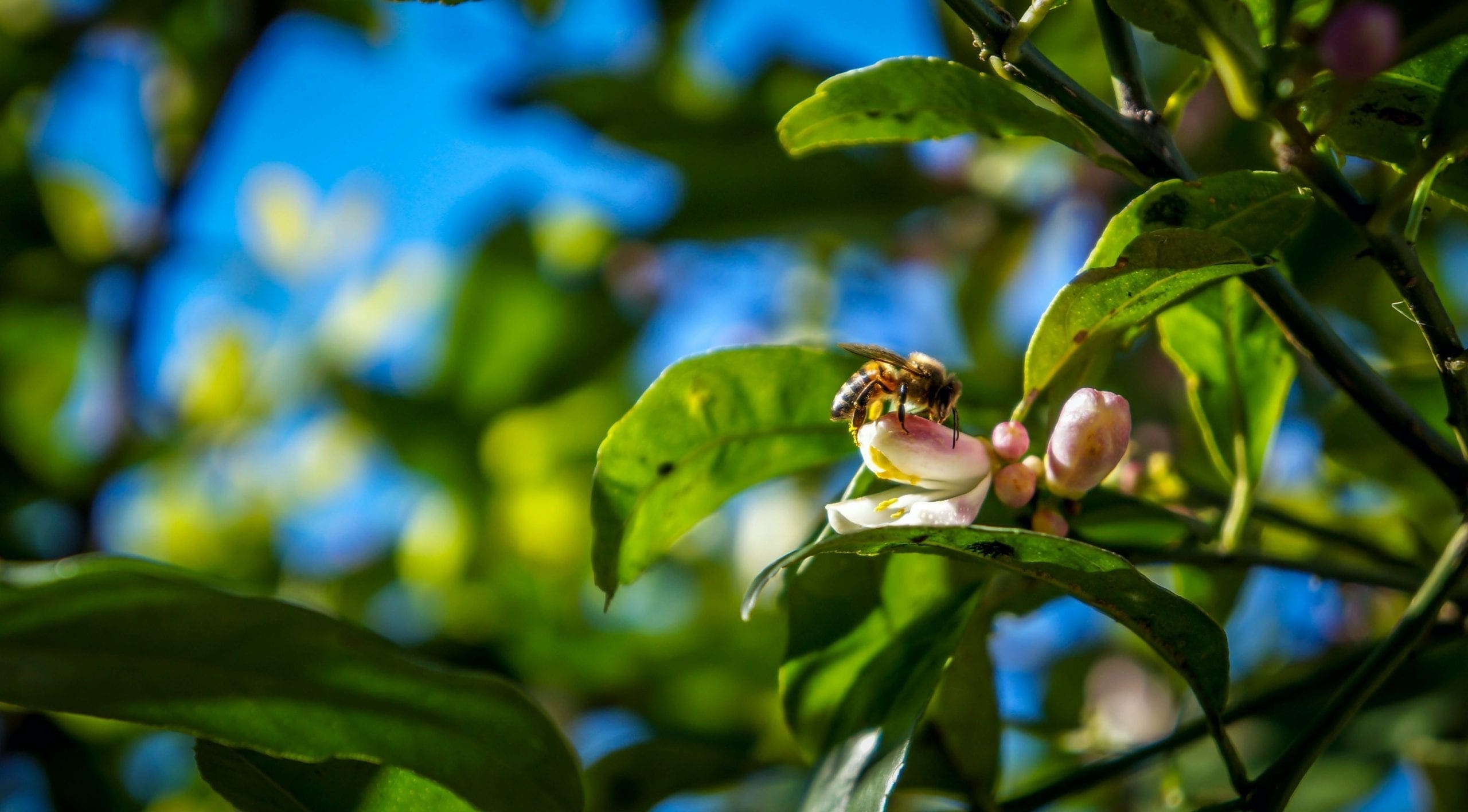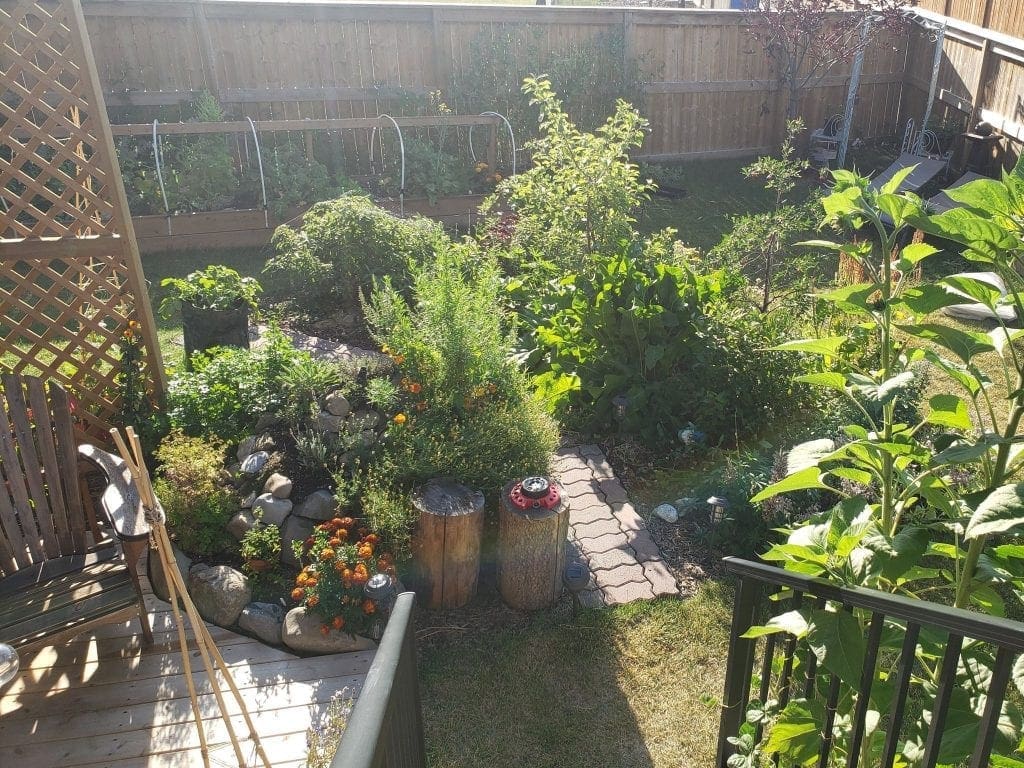
Hello my fellow garden enthusiasts! I am thrilled to be here on Urban Casual sharing my love of gardening with you. I, like many of you, am just a student of the garden – experimenting and listening carefully to what it has to teach me. I first began gardening about 7 years ago as an extension of my cooking hobby, expecting it to yield some ingredients. Then one sunny morning, as I was padding through the grass barefoot on my way to the chives, I stopped to watch a fat bumblebee bounce from bloom to bloom. My garden had become a safe haven in a rather chaotic world. The yield was so much more than vegetables.
I started Backyard Harvest Project with the goal of helping others find the same joy in the garden that I had discovered. I also have a not-so-secret ulterior motive of regenerating our earth one little patch of urban/suburban land at a time.
So enough about me, let’s talk about gardening in Cochrane. There are 10 things I would like you to know about gardening in our special little town.
Cochrane is officially classified as Canadian Plant Hardiness Zone 3b, which means we have on average 99 frost-free days for growing (so… growing a melon that requires 120 days until maturity can be a real challenge). Your climate zone will tell you what annuals you can direct seed, and what perennial plants are likely to survive our winters; however, if you live in the downtown area, you may be closer to zone 4, and if you live on some of the hills or just outside of town, you might be closer to Zone 3a or even zone 2. Zones are just a guideline, not a hard and fast rule.
The wind is a significant climate factor in many areas of Cochrane. Our location at the foothills of the Rockies means in addition to cool winds, we also get warm Chinook winds. In record-breaking cases, Chinook winds in Alberta have raised the temperature by as much as 22 degrees in a single hour. What does this mean as a gardener? Beyond the obvious issue of breaking plants when the wind is really strong, wind saps moisture from plant leaves and the soil around them. Plants can become confused and start to bud or come out of dormancy before it’s safe. This is a great reason to fill your garden with native plants that are accustomed to our particular climate, and consider how to reduce wind when you are designing your garden space.
There is an incredibly supportive community of experienced & generous gardeners in Cochrane. You can join this community by becoming a member of the Cochrane & District Horticultural society, Cultivate Cochrane (a group working towards building a community greenhouse), The Cochrane Gardeners Facebook group, or my own new Facebook group – Backyard Harvest – Gardening Against the Odds.
It is important to understand season extension strategies. We have very few frost-free days (compare us to southern Ontario who can have almost 200 frost-free days or Victoria who can have up to 250), so strategies like greenhouses, low hoop tunnels, frost cloth, cloches, raised beds, and microclimate identification can all be very helpful. A great resource on this topic is Nikki Jabbour – a maritime gardener who has written two books about cold climate gardening.
There are many fruits that grow happily in Cochrane. They include apples, sour cherries, strawberries, haskap berries, Saskatoon berries, raspberries, crabapples, pears, and rhubarb (which isn’t at all a fruit, but since it’s my go to for pies, crisps and jams, I am going to include it here).
There are many plants that we need to start indoors or buy as bedding plants if we want them to fruit or flower. Tomatoes, peppers, woody herbs and many cut flowers will simply not make it in our short season if planted directly into the ground. Our local garden centre, Anything Grows, has an excellent list of indoor and outdoor seed start dates.

Our climate is perfect for growing root vegetables. You will start almost all of your root veggies directly in the garden, no fussy seedling starts here. Another bonus of growing root veggies in our climate? The cool evenings and short season allow the starches in some of the plants to convert to sugars, which makes them extra tasty and sweet – carrots and beets in particular.
The majority of the soil in Cochrane is heavy clay (although not all, I hear of pockets of rich fertile soil around town). Clay isn’t as bad as you think, it holds moisture (yay!); however, it can water log plants and make it hard for delicate seedling roots to really grow. As a Cochrane gardener, your goal is going to be to lighten up and add organic material and air space to that soil.
You will come to dread the term ‘hail cell’. Cochrane sits right on the edge of an area of Alberta known as ‘hailstorm alley’. We were lucky in 2020 when hail storms devastated gardens just east of us in Calgary, but hail is a factor you need to consider when designing your garden. Designing hail net protection over your beds can save you from summer gardener anxiety and harried finagling with tarps in the middle of summer storms.
We have lots of local food options in Cochrane. With enough space and cold climate strategies, it is possible to grow a large portion of your family’s food here in Cochrane. If you want to keep a smaller garden, there are lots of opportunities here to get access to fresh local produce. Be sure you supplement by visiting the excellent Cochrane Farmers Market, signing up for a veggie box with Summit Hill Farm, or buying Breaking Ground Acres microgreens.
While we face some challenges gardening in Cochrane, there is so much joy in succeeding despite adversity. If you would like some help designing your Cochrane garden, please reach out to me at Backyard Harvest Project. I offer a 6-week garden design course (which will run again in March), as well as one on one design consulting.
Happy growing! ~ Callandra
Urban Casual Cochrane is a complete resource of events and community news for your family to enjoy in Cochrane, AB and surrounding areas.
Disclaimer: While we aim to provide the best, most up-to-date information on fun events and activities in and around Cochrane, we cannot guarantee the information on times, dates, admission etc.
These things are out of our control and we encourage you to check in with the event, before you head out to your activity.